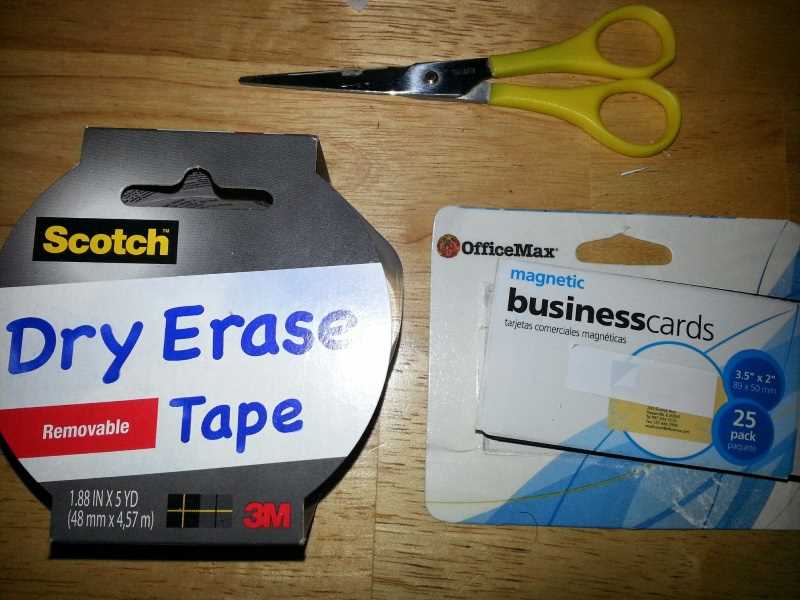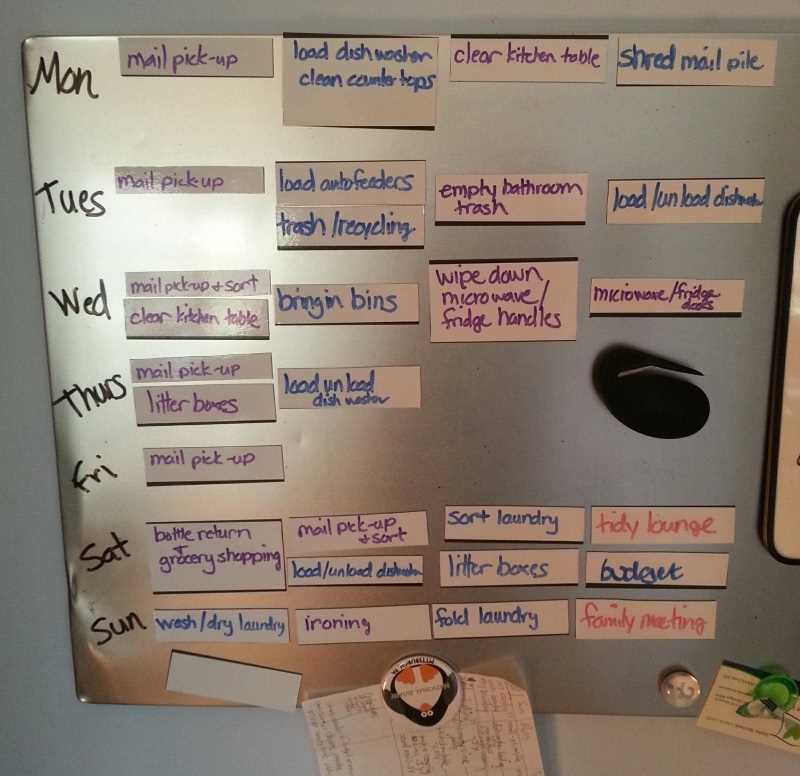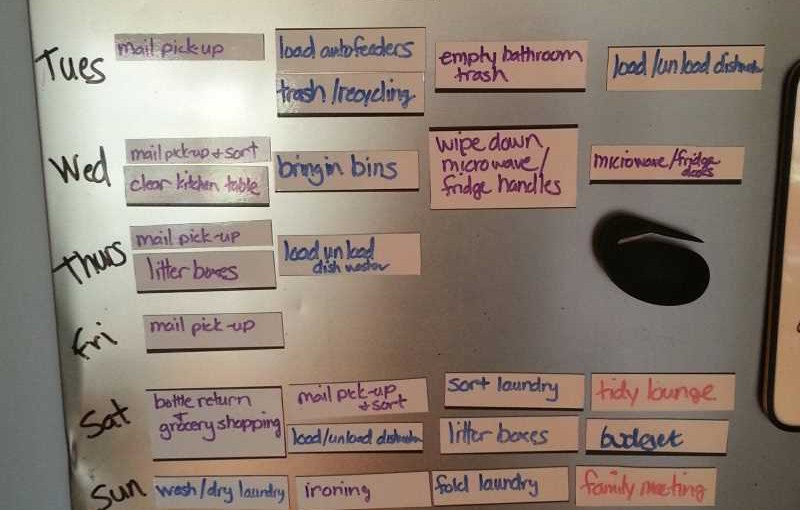My wife and I are terrible at chores. We are terrible at planning for them, balancing them (with other tasks and each other), and performing them. We have been terrible for a long time and we have finally accepted it. To mitigate our ineffectiveness, we tried Trello, but all that did was create a new chore, Check Trello, that we promptly forgot to do.
What we wanted was an analogue approach to Trello that would sit on our wall and scream "Do your chores!" at us in a way that we could not ignore. So Chrissy drew up a simple chart on a dry erase board in our kitchen using a list of chores we had created together. This was great. We were finally remembering to get things done, but it was not perfect. We often needed to rearrange chores to adjust for various scheduling conflicts, but erasing them just to rewrite them elsewhere on the board was tedious. Especially so if it meant reorganizing other chores to make things fit.
Our implementation of Trello was flawed.
As a fix for this organisational deficiency, the blank equivalent of poetry fridge magnets came to mind. Dry erase magnets that could be edited and rearranged with ease. I found some ready made solutions on the Internet, but I was not sure that they would fit exactly what we needed, so I went hunting around the local office supply stores. Eventually, thanks to the helpful manager of our local OfficeMax, I came up with a plan to make my own using business card sized magnets and some dry erase tape.

To make them, I carefully peeled the backing from the business card magnets a little to reveal the adhesive. I then peeled the backing off the dry erase tape a little and lined up the tape with the card, adhesive to adhesive. I then applied the tape to the cards, carefully avoiding any bubbles (usually) and trimming the tape to size.




Once I had applied the tape to all of the magnets, Chrissy divided them up into a range of sizes1.

Then, with all the magnets backed by dry erase tape and cut to the sizes we wanted, Chrissy set up our new chore board.

- We had tried to trim some of the magnets to useful sizes and to remove any exposed adhesive, but we never found a way to do this well [↩]

